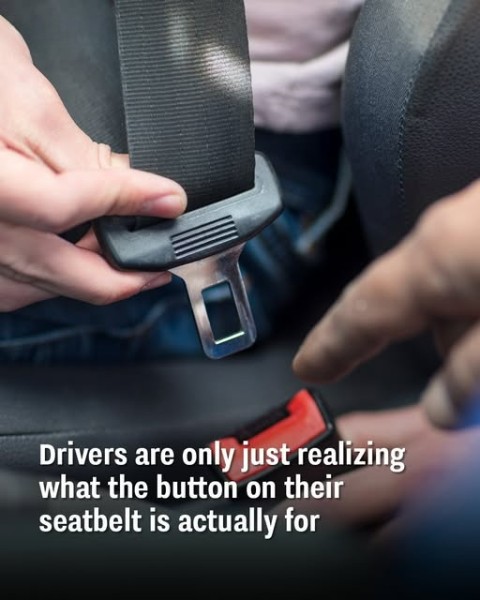Drivers are only now beginning to realize the true purpose behind that little button on their seatbelts—a feature that might easily be overlooked yet is absolutely essential to the overall design and functionality of modern vehicle safety systems.

It may surprise you to learn that there is a small plastic button, typically located near where the belt’s tongue inserts into the buckle, which serves a very specific function: it keeps the buckle in the optimal position along the seatbelt so that it remains easily accessible every time you fasten up. Although you will hopefully never have to worry about this button during an emergency, understanding its role gives you insight into the careful engineering that goes into something as seemingly simple as a seatbelt.
As we all know, a seatbelt is designed to secure a driver or passenger in their seat during a collision or a sudden stop, effectively preventing them from being thrown forward or even through the windshield. In fact, research conducted by the road safety charity Brake has demonstrated that wearing a seatbelt can reduce the risk of death in a serious accident by up to 50 percent, making it one of the most important safety features in any car.
The entire seatbelt system comprises several components, including the buckle itself, the tongue attached to the webbing, and the pillar loops that form part of the three-point system used in most modern vehicles. Yet, amid these well-known components, the little plastic button often goes unnoticed despite its critical role.
TikToker @epiccfacts explained, “The little button on your seatbelt is to stop the buckle from going past it, so it will always be in the right spot when you go to buckle it up.” In other words, this unassuming button is deliberately designed to hold the buckle in a convenient location—right where you naturally reach for it as you get into your car—so that you don’t have to fumble around trying to locate or adjust it.
While this detail might seem like a minor afterthought or even a luxury feature, it is in fact an integral part of ensuring that the seatbelt functions as intended. After all, seatbelts only protect you if you actually wear them, and if the process of buckling up becomes too cumbersome or frustrating, people might be tempted not to use them at all. Imagine having to wrestle with your seatbelt every time you get into your vehicle because the buckle isn’t staying in the proper place—it would quickly become a source of irritation, and that annoyance might even discourage you from buckling up regularly.
To counteract this potential issue, manufacturers have engineered seatbelt systems to be as user-friendly as possible; the inclusion of this little button is a prime example of how thoughtful design can encourage more consistent use of a vital safety device. Social media users have taken notice of this clever feature, with many expressing genuine surprise and appreciation upon discovering its purpose.
Some have commented, “Wow, that seatbelt button blew my mind; I would have never thought of that,” while others have exclaimed, “Wow! I never knew!!” There are also those who believed that this feature was common knowledge, remarking that they always assumed everyone knew about the seatbelt button, with comments such as “I thought we all knew about it” or “Everyone knew about that little feature on the seatbelt.” Whether this information is new to you or simply a reminder of the remarkable ingenuity behind everyday safety features, it clearly demonstrates that even the smallest design elements are meticulously considered to ensure that every aspect of a vehicle contributes to driver and passenger safety.
Next time you fasten your seatbelt, take a moment to appreciate not only its life-saving capabilities but also the thoughtful engineering that keeps its components in exactly the right place, making your journey both safer and more convenient. Ultimately, that tiny button stands as a testament to the level of detail and care invested in automotive design, proving that even the most seemingly insignificant parts play an essential role in protecting lives on the road.





